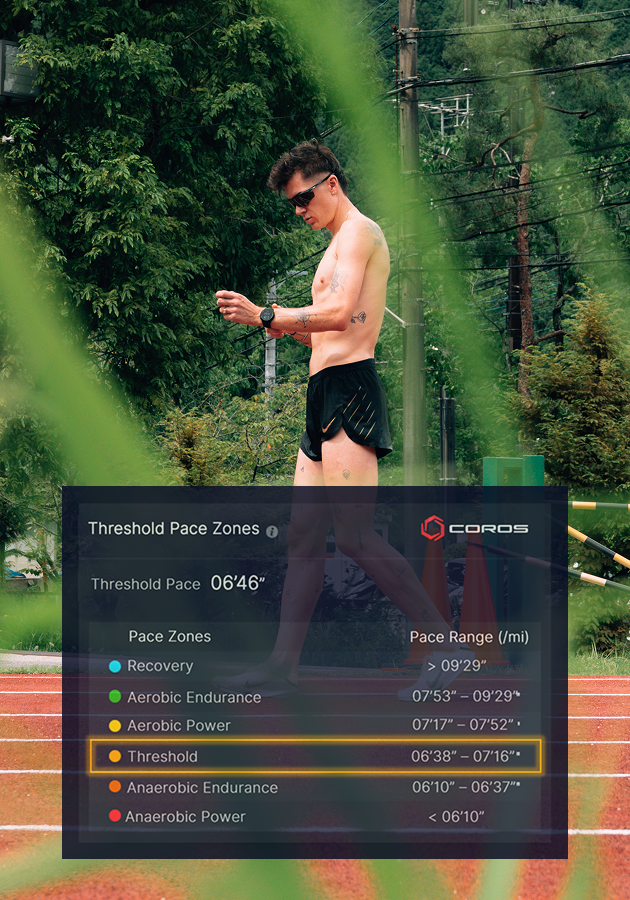When you exercise, your muscles need energy. They primarily get it by breaking down carbohydrates through a process called glycolysis. If there's enough oxygen available, this process is clean and efficient. But as intensity and energy demands increase, your body begins to rely more on energy production that doesn’t require oxygen. This process is faster, but it comes with a tradeoff: it produces lactate as a byproduct.
Lactate itself isn't harmful, your body can actually reuse it as fuel. However, when you cross a certain intensity, your body starts producing lactate faster than it can clear it, and that's when problems arise. When lactate accumulates, acidity levels in the muscles increase, leading to fatigue and reduced performance.
That tipping point is called your lactate threshold. It’s not the point of exhaustion, but it’s where the work gets serious. Training at or just below this threshold improves your ability to sustain faster paces longer without fatiguing.
Using COROS to Find Your Threshold

COROS uses a six-zone model for both pace and heart rate. Zone 4 is your Threshold Zone, sitting between Zone 3 (Aerobic Power) and Zone 5 (Anaerobic Endurance). It’s a critical area in your training distribution. COROS provides both a threshold pace and a threshold heart rate, allowing you to train with either intensity type.
Whether you're following a COROS training plan or using the Workout Builder, threshold sessions are clearly identified and often take the form of sustained intervals or cruise intervals (e.g., 4 x 6 minutes at threshold with short recovery).
Your threshold heart rate and threshold pace are set using a Running Fitness Test or calculated based on your workout data over time. These values drive the accuracy of your training zones, so testing and updates are essential as your fitness improves.
Learn more about threshold and HR zones in our Heart Rate Zone Guide
Why Train at Threshold?
Training at lactate threshold helps in two key ways:
- You increase your sustainable pace: Threshold training raises the ceiling for your aerobic endurance and improves race pace efficiency, especially in events from 10K to half marathon.
- You delay fatigue: The better your body is at clearing lactate, the longer you can hold faster paces without slowing down. Not only does it help you run faster, you can also run that pace for longer.
Threshold work builds what endurance athletes need most: the ability to go faster for longer. This is helpful for every endurance event, from the mile to the marathon and beyond.

Jakob Ingebrigtsen, Olympic gold medalist and world champion, is a well-known example of this in action. Nearly all of his hard sessions are in the threshold zone during base training (including his famous "Double Threshold" days). This high frequency allows him to build an exceptional threshold pace and become as good as possible at resisting fatigue.
Threshold training isn’t flashy, but it’s effective. And it isn’t just for elites, either. It’s practical for everyday athletes too, because it improves performance without requiring maximal effort every session. This means you can bounce back faster than harder intervals, and maximize the amount of quality work you do.
/filters:quality(90)/fit-in/24x24/coros-v2/images/4fbd8cc7f8e10727238ed4fd78204aed.png)

/filters:quality(90)/fit-in/970x750/coros-web-faq/upload/images/ffe40ad45f1d1281d1834c1184685607.png)




